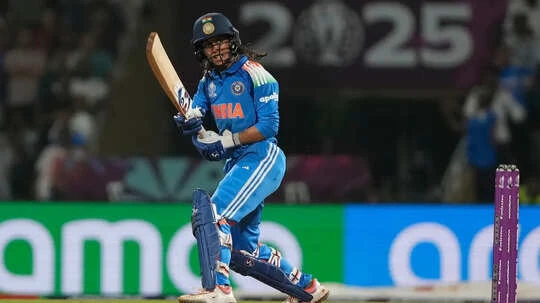Forty-two years after Kapil Dev’s men shocked the cricketing world at the 1983 World Cup, history found its echo at DY Patil Stadium in Navi Mumbai.
The Indian women’s team defeated seven-time champions Australia by five wickets in the 2025 Women’s ODI World Cup semifinal on Thursday.
Their thrilling chase of 339 – capped by Jemimah Rodrigues’ unbeaten 127 – did not just send the nation into rapture. It struck a deep chord with the men who once changed Indian cricket forever.
The members of Kapil’s Devils, India’s 1983 World Cup-winning squad, were among the first to salute the women’s team. “It’s one of the greatest wins in Indian cricket – both men’s and women’s game,” said batting legend Sunil Gavaskar, his voice brimming with pride.
For Sandeep Patil, another hero of that golden summer, the match stirred powerful memories of India’s semifinal victory over England at Old Trafford in 1983.
“The Indian women’s team’s World Cup semi-final win over Australia reminded me of our semis victory against England in the 1983 World Cup. Beating Australia is always special. To beat the West Indies in the 1980s (India humbled the mighty West Indies by 43 runs in the final at Lord’s) was something similar. This Australian women’s team is just as dominant,” said Patil. “I’ve sent a congratulatory note to Amol (Muzumdar, Indian women’s team head coach),” he added.
‘Old Bombay ‘khaodoos’
Patil’s memories from ’83 came flooding back – his own blistering 32-ball 51 not out, peppered with eight boundaries, had powered India to 214 in the semi-final. Watching Jemimah Rodrigues chase down a world-record total with poise and power, he couldn’t help but draw parallels.
“Of course, Jemimah’s knock was better than mine,” he admitted with a laugh. “Her shot selection, calmness under pressure, and that typical old Bombay ‘khaodoos’ (gritty) attitude were the standout features of her innings. It was a big target, but she remained till the end at the crease. It was a brilliant century. My half-century was literally ‘half’ of it – I mean I was 51 not out, and Jemimah was 127 not out! When an Indian women’s team batter scores a century, it feels fantastic.”
Adding to the symmetry of fate, Patil recalled how former West Indies pacer Ian Bishop had said during the semi-final commentary that he wanted the Indian women’s team to “remember 1983.”
“And history was indeed repeated!” Patil said with a grin. For Patil, the triumph was not just about one night’s heroics – it was the culmination of a long, patient evolution in women’s cricket. He traced its roots back to his own stint as Director of the National Cricket Academy (NCA) in Bengaluru between 2008 and 2012, when India’s leading women cricketers began training at the BCCI’s high-performance centre for the first time.
“Our women’s team has played some fantastic cricket. They’ve been consistent in the last few years,” he said. “I remember that the transition of Indian women’s cricket started in 2009, when I was at the NCA, and the likes of Mithali and Jhulan trained there. It was the first time that India’s women cricketers had come to the NCA, where top coaches like Bharat Arun and Dinesh Nanavati started working with them in special camps.”
Patil’s voice softened as he reflected on the journey. “I’ve seen their progress very closely. I feel very happy with the growth of women’s cricket in India. While Diana (Edulji) and Shantha (Rangaswamy), both former India captains, were the pioneers of women’s cricket in India, Indian women’s cricket has progressed so well,” he said.
As Jemimah’s century lit up Navi Mumbai, it wasn’t just another victory – it was a bridge across generations. From Lord’s in 1983 to DY Patil in 2025, Indian cricket once again proved that belief, grit, and heart can defy even the most towering of champions.
